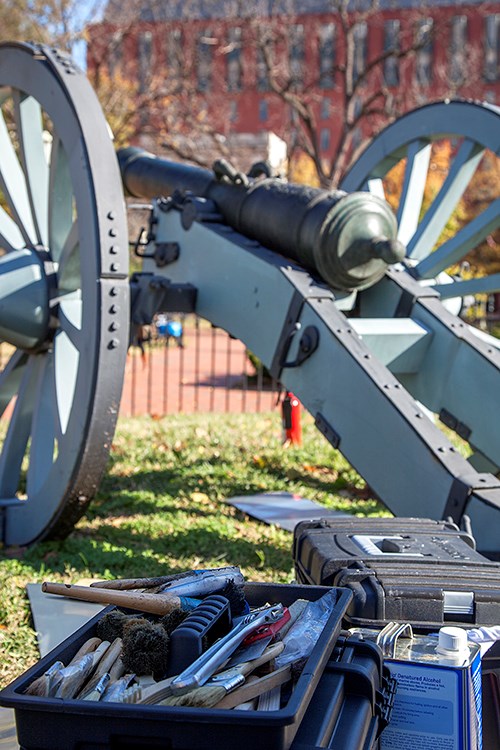Last updated: August 18, 2017
Article
Pressure Washing, Parks, and Presidents: Lafayette Park gets spruced up for the Inauguration

NPS photo by Marcey Lynn Frutchey
They are all part of the historic preservation of Lafayette Park. This seven acre park just north of the White House was designed as part of Pierre L’Enfant’s 1791 plan for Washington. Pennsylvania Avenue now separates it from the White House grounds.
The 19th century row houses that surround its other three sides create a sense of historic character in the center of a modern capital city. Previous presidents and first ladies like Franklin D. Roosevelt, Dwight D. Eisenhower, John F. and Jacqueline Kennedy, and Lyndon B. and Lady Bird Johnson, all helped preserve these buildings through their advocacy. In 1970, the designation of the Lafayette Square National Historic Landmark District ensured that the area around the park could be preserved as a whole, vibrant neighborhood, with new architecture complementing the older buildings.
This preservation story continues in the National Park Service’s (NPS) ongoing work to maintain Lafayette Park as an open public space. In preparation for the 58th Presidential Inauguration, NPS architectural conservator Jacquelyn Gulick and five National Park Service preservation employees worked through November and December to clean and preserve the park’s most visible statuary. The bronze statue of a mounted Andrew Jackson surrounded by four cannons is its most central monument, and two bronze Navy Yard Urns frame the park’s view of the White House.
First, the NPS crew set up scaffolding to pressure wash the Jackson statue and marble base. Then they cleaned the bronze statue and marble base with a mild non-ionic detergent to remove surface soiling, failed wax, and to reduce the appearance of copper staining on the white marble. Finally, they used a propane torch and applied a hot wax coating to the statue to protect the bronze. They also worked to remove a pervasive green stain on the statue’s marble base through careful detail cleaning with specially selected solvents and detergents.
Crews also cleaned and waxed the four surrounding cannons and two bronze Navy Yard Urns, restoring them to their original black-brown patina. They applied a cold wax paste with mineral pigments to the cannons to avoid using a torch near the cannons’ wooden carriages. Before and after pictures show the difference between an untreated cannon, cleaning in progress, and one that is fully waxed and protected from the elements.
NPS’s next priorities for Lafayette Park include making new 3D scans of the cannon inscriptions to record them before the environmental conditions further affect their legibility and setting up scaffolding to treat the statues of four Revolutionary War heroes in the corners of the park. This work will go on throughout the year, long after the next inauguration, because as part of the National Park System, Lafayette Park belongs to and ultimately benefits the American people.
